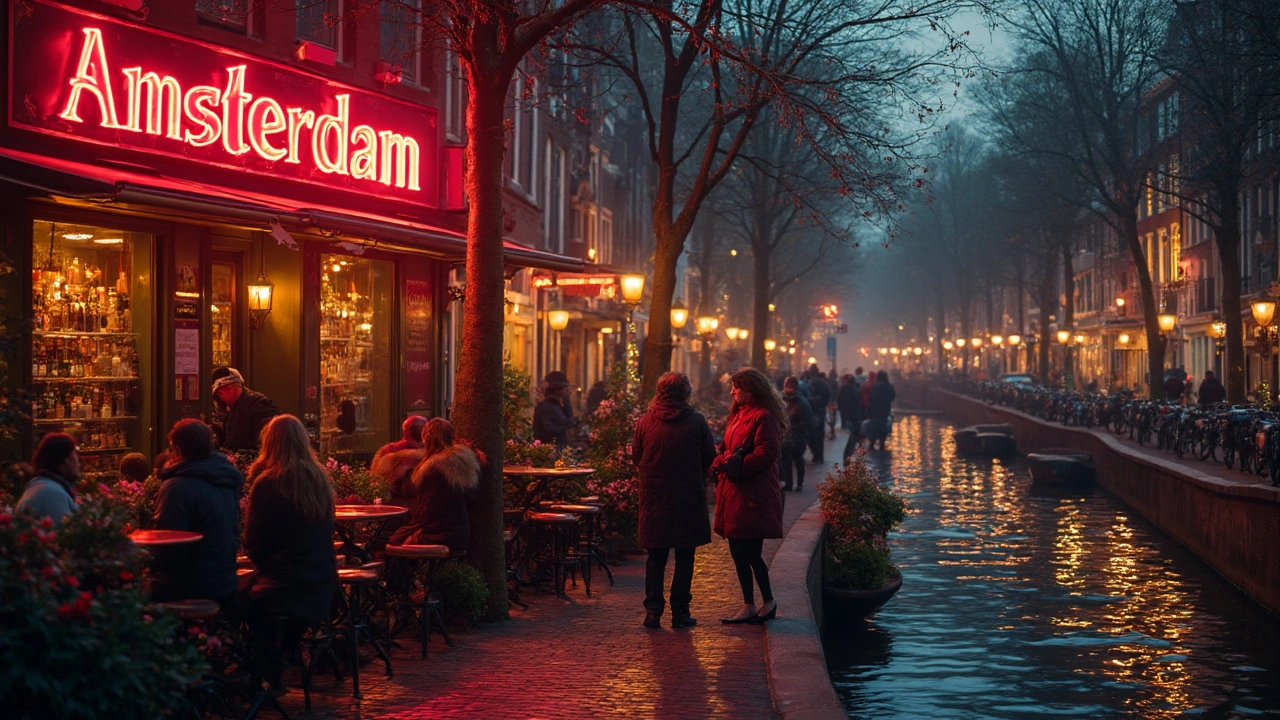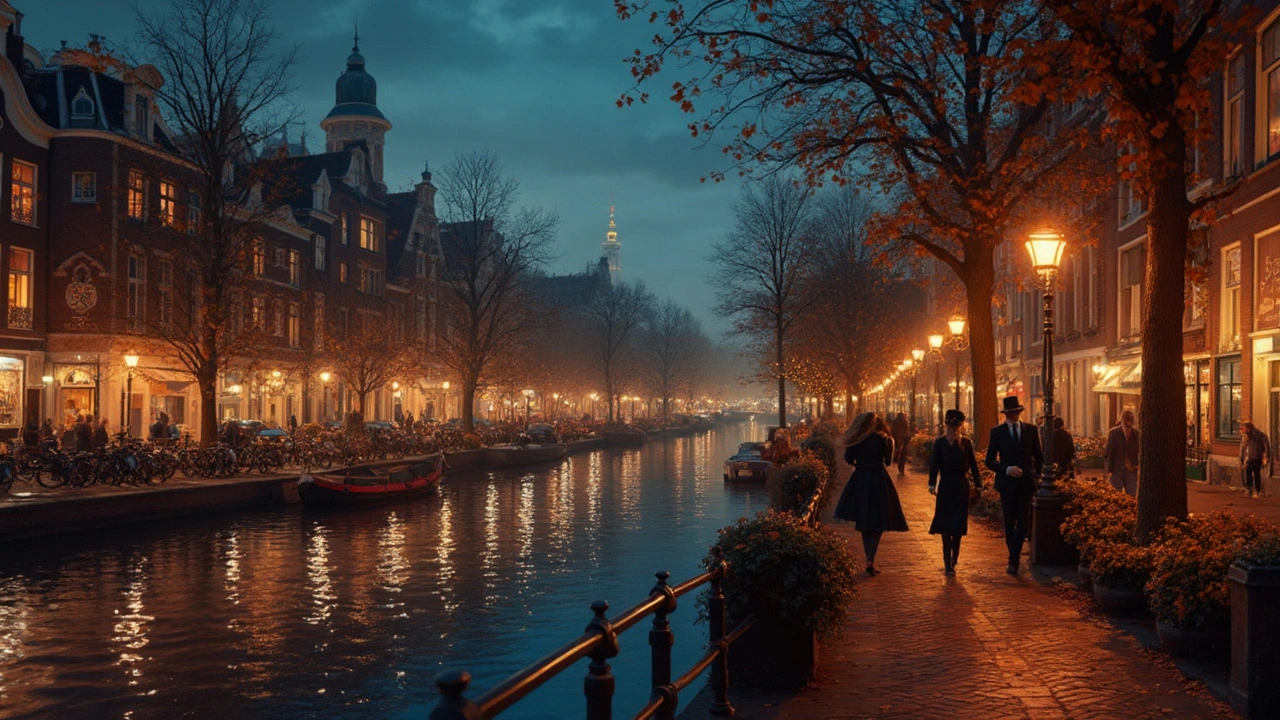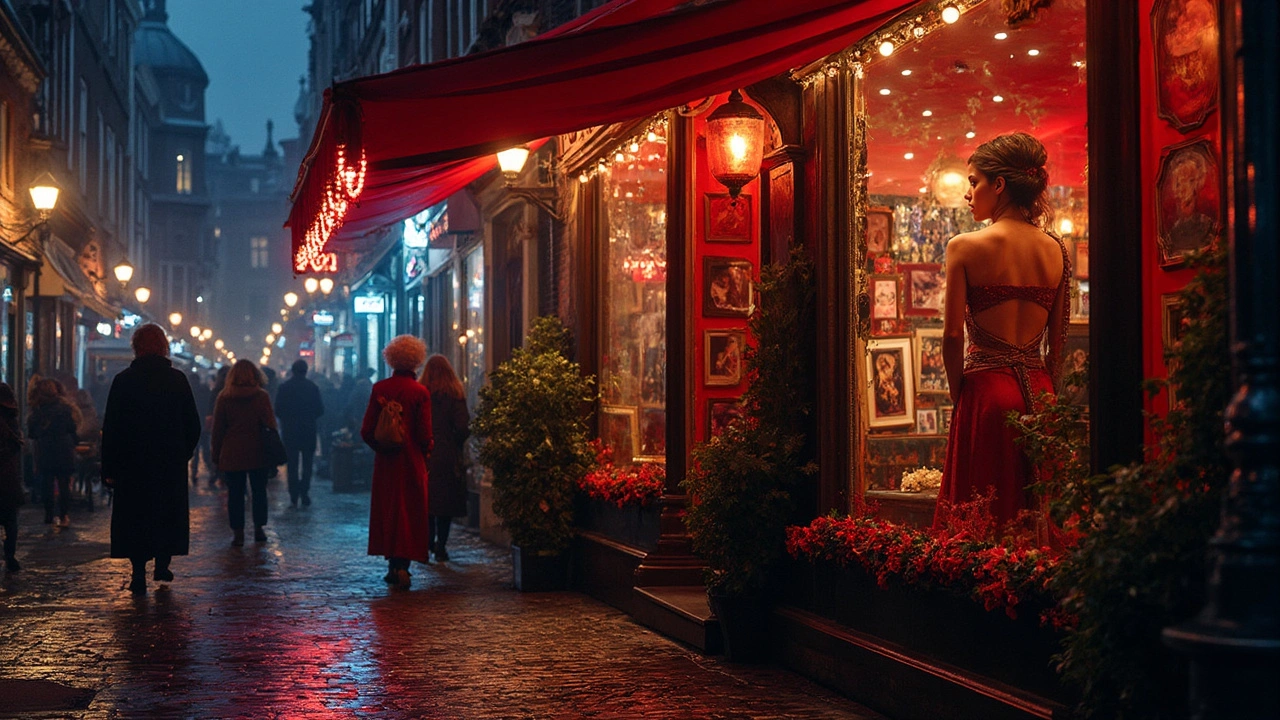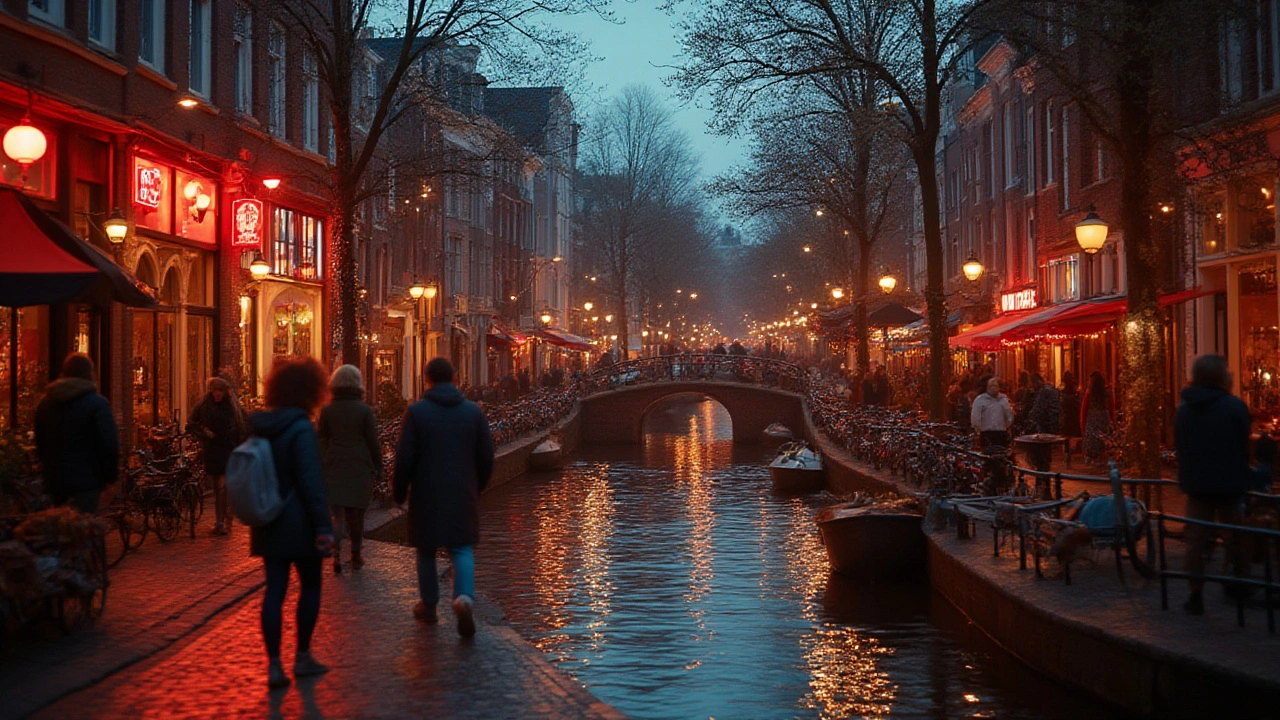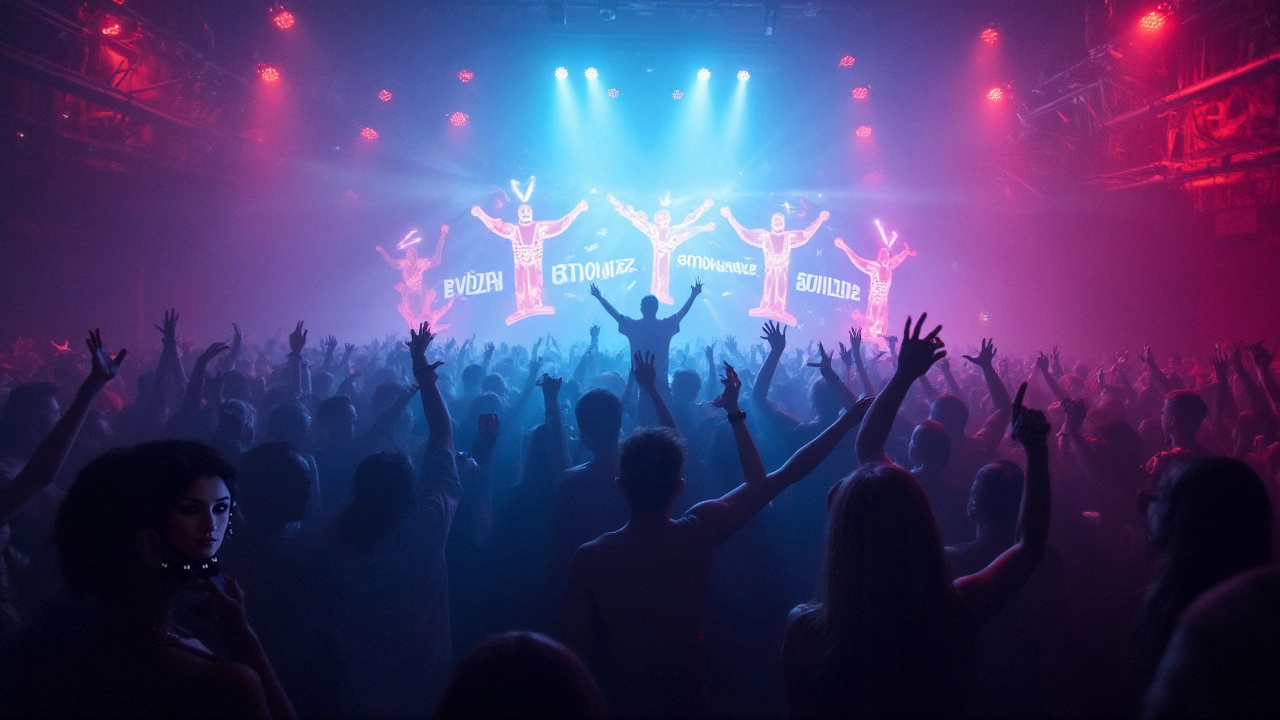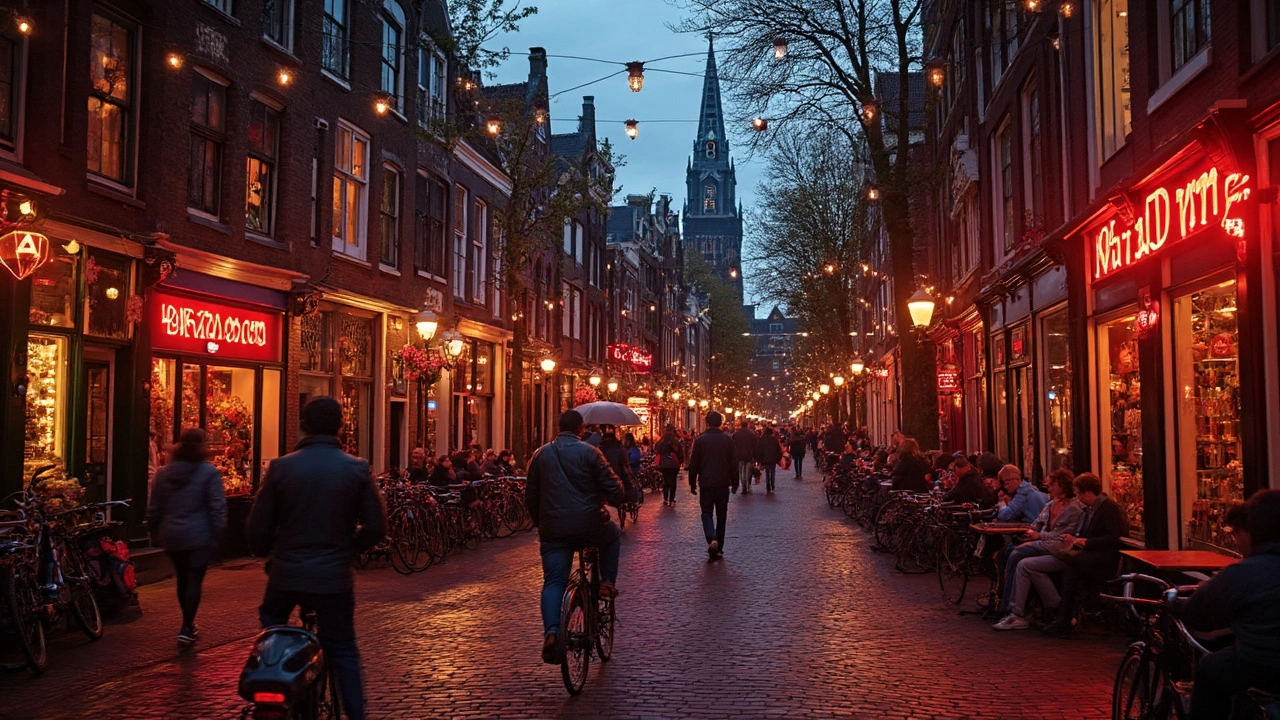
Planning a trip to Amsterdam with the Red Light District on your list? You’re not alone. Every year, tourists from all over pack the narrow lanes of De Wallen, curious about the city’s famous mix of nightlife and history. This area sits right in the heart of old Amsterdam, a place where neon lights, picturesque canals, and centuries-old buildings all blend together.
First thing to know: the Red Light District is actually one of the most visited and closely watched streets in the city. The Dutch call it 'De Wallen,' and you’ll find it buzzing late into the night. Locals and the municipality have worked hard to keep this spot safe without killing the vibe, so you’ll spot security cameras, regular police patrols, and city staff making rounds. Most travelers say they feel pretty secure here, even late at night.
Don’t let the stories or movies spook you—most incidents in De Wallen are petty, like pickpocketing or occasional scam artists. Just keep an eye on your stuff the same way you would in any crowded tourist hotspot, whether that’s at Dam Square or outside Amsterdam Centraal Station. And remember, this isn’t a lawless adult theme park; people live, work, and socialize here every day.
- What Makes the Red Light District Unique?
- Street Safety: Crime and Common Scams
- Police Presence and Security Measures
- Tourist Dos and Don’ts
- Local Services, Venues, and Events
- Final Safety Tips for a Smooth Visit
What Makes the Red Light District Unique?
When people talk about the Red Light District, most first-timers think it’s all about the windows and nightlife. That’s just a part of the story. The real twist? De Wallen is actually one of the oldest neighborhoods in Amsterdam, with roots going back to medieval times. You’ll spot ancient churches, like the Oude Kerk, right next to neon-lit windows. Locals go about their business just like anywhere else in the city.
What really sets the district apart is how open and regulated everything is. Sex work here is legal and strictly monitored by city authorities. This isn’t some wild free-for-all—in fact, everyone needs to follow clear rules. Every window, club, and show runs with licenses, background checks, and health inspections.
The area isn’t only about adult entertainment. Expect quirky museums (like the Hash Marihuana & Hemp Museum or the Museum of Prostitution), tiny independent shops, and some of the best late-night frites you’ll munch anywhere. Restaurant FEBO even lets you grab snacks straight from the wall—a classic Dutch move.
“The Red Light District shows how Amsterdam balances freedom with order—everything is legal, but nothing goes unmonitored.” – Dutch News NL
Curious about just how busy it gets? Check out these quick stats:
| Fact | Number/Info |
|---|---|
| Annual Visitors (pre-2020) | Upwards of 2 million |
| Active Windows | 300+ |
| Number of Licensed Cafés | 50+ |
| Night Clubs and Theatres | 35+ |
There aren’t many places in Europe (or the world) where tourists can stroll from a centuries-old church to a cheeky cabaret in just a few steps. That blend of old, new, relaxed, and regulated is what makes De Wallen stand out from any other part of the city.
Street Safety: Crime and Common Scams
Worried about safety in Amsterdam’s Red Light District? You’re not the only one. Here’s some straight talk: De Wallen is much safer than it might look after dark, but you still need to stay alert, like you would in any busy city area. According to Amsterdam’s local police, the crime rate here dropped by about 20% between 2018 and 2024, thanks to visible patrols and security cameras on almost every corner.
Most tourists don’t face serious crime in the Amsterdam red light district, but petty theft is common. Pickpockets often target crowds, especially on weekends after midnight. These folks usually work in small groups and are quick—your phone, watch, or wallet can disappear before you notice.
- Keep bags zipped and in front of you, not hanging behind.
- Don’t flash cash or valuables in public.
- If someone bumps into you, check your stuff—distraction is a common trick.
Scams are another nuisance. One well-known hustle is the fake police scam. Someone in plain clothes flashes a “badge” and says they need to check your wallet or passport for counterfeit bills. Never hand these over; the real police in this area wear full, visible uniforms. Other classic scams include:
- “Friendly” strangers offering help with transport, then demanding tips or leading you to dodgy clubs.
- People selling “cheap drugs” on the street—what you get is usually fake or worse, dangerous.
- Unlicensed taxi drivers promising to take you to popular nightclubs or coffee shops, quoting insane prices or going in circles.
Most violent incidents are rare and usually involve fights between drunk tourists. Locals generally steer clear, and serious crime has dropped compared to ten years ago. If you’re not looking for trouble, you’re not likely to find it.
| Type of Incident | Reported Cases |
|---|---|
| Pickpocketing | 370 |
| Fake Police/Scams | 45 |
| Assault | 16 |
| Drug Offenses | 58 |
Bottom line: respect your surroundings, watch your belongings, and use your common sense. The rest is about soaking in the chaos while steering clear of anything that feels sketchy. The Red Light District is set up for tourists, but a little street smarts go a long way.
Police Presence and Security Measures
If you're walking through the Amsterdam Red Light District, it's hard not to notice how much the city keeps an eye on things. The area hosts the highest concentration of police patrols in central Amsterdam, especially on busy weekends and during events like Pride or King’s Day. Cops here are easy to spot—they’re often out in pairs, chatting with tourists or checking out the scene. On top of that, the city’s team of community wardens, known locally as “handhavers,” patrol by foot and bike, looking for trouble or helping people who get lost in the maze of alleys.
Most bars, clubs, and coffeeshops in De Wallen also have bouncers trained to spot shady activity like pickpocketing or aggressive behavior. And don’t be surprised to catch sight of a mobile police station (it looks like a big blue-and-white van) parked at the edge of the district on weekends. These are there so you can report anything weird or get help fast if needed.
Security cameras are everywhere—high up on lampposts and buildings—covering the busiest spots. This heavy camera presence, according to Amsterdam’s city council, helps keep crime rates lower than in most other nightlife areas in the city.
- Police regularly patrol on foot, bike, and sometimes even by boat along the canals.
- Community wardens help keep things chill, from crowd control to giving directions.
- Emergency buttons are installed in busy spots for quick police assistance—just look for the red panic buttons around the Oudezijds Achterburgwal and other main streets.
- Plainclothes officers also roam the district, especially at night, to spot pickpocketing and drug dealers.
Let’s put it in numbers. Here’s a quick look at recent local stats for the Red Light District from Amsterdam’s official crime monitor:
| Year | Reported Pickpocketing (De Wallen) | Police Response Time (minutes) |
|---|---|---|
| 2022 | 324 | 4.8 |
| 2023 | 271 | 4.5 |
| 2024 (Q1) | 61 | 4.4 |
It’s no wonder the neighborhood feels safer than its reputation. The main point is: police and city staff take the Red Light District seriously. If you ever run into trouble or see something that feels off, don’t hesitate to approach a police officer or use those handy emergency buttons. They know a lot about the area and won’t give you a hard time for asking questions or needing directions.
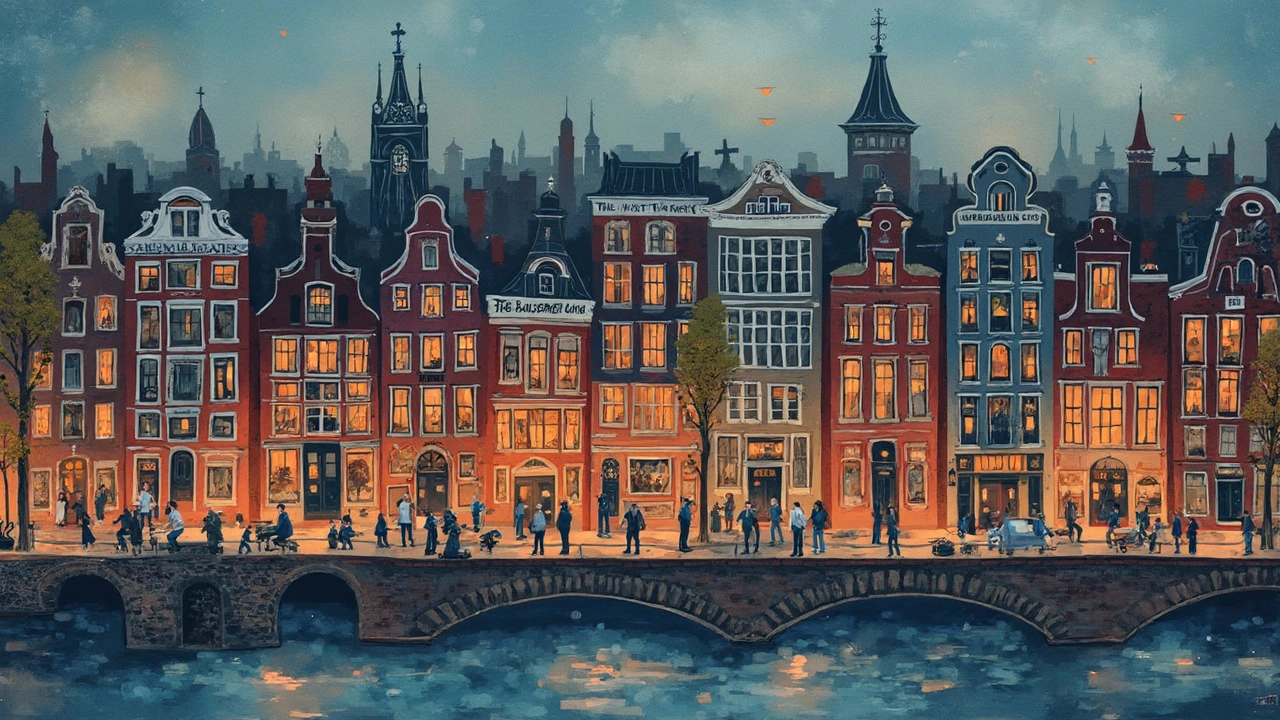
Tourist Dos and Don’ts
Getting the most out of your trip to the Amsterdam Red Light District is all about following a few simple do’s and don’ts. You don’t need to overthink it—just use a little common sense and respect for local rules.
- DO stay on marked paths. Stick to main streets and avoid wandering down closed-off alleyways, especially after dark. The district can be a maze, but the safer areas are well-lit and easy to follow.
- DO mind your belongings. Pickpockets work all tourist-heavy spots. Wearing your backpack on your front is a smart move when it gets crowded, especially during big events or weekend nights.
- DO be respectful. The workers in window brothels are professionals, not attractions. Smile, but don’t stare, bang on the glass, or try to grab photos.
- DO ask for help if you need it. Police and city guides are visible and approachable. They’ll help with directions, report issues, or deal with any troublemakers.
Now, here’s what you really want to avoid:
- DON’T take photos or film sex workers. Dutch law is strict on this, and so are the locals. If you ignore it, expect someone to stop you fast—sometimes not very politely.
- DON’T buy drugs from street dealers. Legal coffeeshops exist for a reason. Dealers out here often sell fake or dangerous products and police regularly crack down on them.
- DON’T get too loud or drunk. You’re in a social spot, but rowdy behavior attracts the wrong kind of attention. Public drunkenness isn’t tolerated and can earn you a night in a police cell.
- DON’T block sidewalks. Standing in big groups annoys locals and makes you an easy target for scammers.
Curious how tourists actually fare in the Red Light District? Check out these official stats from Amsterdam’s municipal police (2024):
| Incident Type | Reported Cases Per Year |
|---|---|
| Pickpocketing | 1,750 |
| Physical Assault | 120 |
| Drug-Related Issues | 410 |
| Lost Property | 940 |
If you keep your wits about you, follow the rules, and remember it’s a real neighborhood with real people, you’ll have a smooth and maybe even eye-opening visit to one of Amsterdam’s most famous districts.
Local Services, Venues, and Events
If you’re heading into Amsterdam’s red light district, you’ll notice straight away that it’s more than a row of window brothels. The area is packed with services that cater to locals and visitors, whether you’re there for culture, food, or just to check out the nightlife.
One of the main draws here is the variety of museums. The Red Light Secrets Museum lets you experience what life is like on the other side of the window—seriously, you even get to sit in a window and snap a photo. For something more unusual, there’s the Cannabis Museum and the Erotic Museum right on Oudezijds Achterburgwal.
Fast food, local favorites, and fresh stroopwafels line the streets. Try Febo—famous for its vending machine snacks—or grab a herring sandwich from a street stand. For craft beer fans, De Prael brewery is just a few steps away from the action. Their tasting room gets busy but is worth it for local brews and Dutch cheese plates.
Safety-wise, there are plenty of police stations and info kiosks. The city runs the Pink Point info booth, where staff help answer questions about LGBTQ+ nightlife and point you to queer-friendly venues. You’ll also spot a few 'Welkom' hosts wearing red jackets, handing out guides and helping lost tourists.
If you run into trouble—maybe you lose your phone or need medical help—there’s a 24/7 first aid post at Warmoesstraat and most bars are used to helping out tourists who’ve had one too many.
- Red Light Secrets Museum – window brothel experience
- De Prael Brewery – local beer and food
- Erotic Museum – Amsterdam’s colorful history
- Febo – iconic Dutch snack machines
- Pink Point – LGBTQ+ advice and info
The Red Light District’s calendar is full of events. Kingsday (April 27) transforms the neighborhood into one giant party, while Amsterdam Light Festival (usually December-January) brings wild light installations along the canals, including in De Wallen. Every weekend, you’ll catch walking tours—just skip the ones clogging the sidewalks, and book in advance with official guides who know the area inside out.
| Service | Location | Hours |
|---|---|---|
| First Aid Post | Warmoesstraat 39 | 24/7 |
| De Prael Brewery | Oudezijds Armsteeg 26 | 12:00–20:00 (Weekends till 23:00) |
| Red Light Secrets Museum | Oudezijds Achterburgwal 60 | 11:00–23:00 |
Best piece of advice? Use cashless payment—pickpockets target distracted tourists flashing wallets. Most shops take cards. And if you’ve got questions, don’t be shy: the Dutch can be direct, but they’re usually happy to help out a lost traveler.
Final Safety Tips for a Smooth Visit
If you’re set on checking out Amsterdam’s red light district, a few simple steps can keep your trip hassle-free. Being street-smart here isn’t that different from navigating any busy tourist spot, but a couple pointers are unique to De Wallen.
- Mind your valuables: Pickpocketing still happens, especially after dark and in crowded bars or alleys. Use a zipped bag or secret pocket, and avoid waving your phone or wallet around.
- Respect the workers: Taking photos of sex workers or the windows is strictly off-limits and can land you in trouble. There are clear signs everywhere, and if you ignore them, expect a direct response.
- Stick to main paths: Wandering into dark or quiet side streets isn’t a great idea late at night, especially if you’re alone or a bit tipsy. The main lanes are well-lit and patrolled.
- Watch out for unofficial guides: Some people hanging around offer tours or other services but aren’t legit. Book at an official outlet or use reputable apps like GetYourGuide or Tours & Tickets.
- Don’t get scammed at ATMs: Use machines inside well-known places like Albert Heijn, the train station, or hotels rather than outdoor ones in the district which sometimes attract scammers.
- Know where to get help: Amsterdam police have a visible presence, and there are designated Safe Spots run by the city. Most bars and shops know how to help you if you lose something or feel stressed.
| Risk | Likelihood | How to Handle It |
|---|---|---|
| Pickpocketing | Moderate (esp. after 8pm) | Use zipped bags, keep valuables close |
| Photo Fines | Low (if rules followed) | Never photograph workers or windows |
| Scams/Unofficial Guides | Low | Book tours at official outlets, avoid street offers |
| ATM Skimming | Low | Use indoor ATMs only |
| Drunken Fights/Incidents | Rare | Stay in main areas, avoid trouble spots |
If you’re out late, night buses run regularly from Centraal Station, and taxis are easy to flag down on Damrak. And Dutch tap water is totally safe to drink if you want to avoid spending extra on bottled water from convenience stores.
One last thing: travel insurance can cover lost items or medical issues, which is worth having just in case. If you get into a situation you can’t handle, just go to the nearest police officer or well-lit business; both are used to helping stranded visitors. Use common sense, look out for each other if you’re in a group, and the Red Light District will show you exactly why it’s a place folks talk about long after they leave Amsterdam.

